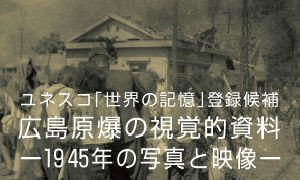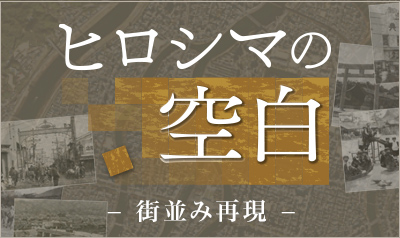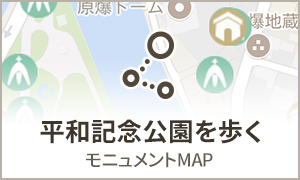Security Community Building in Asia –the lessons of OSCE and ASEAN
14年8月15日
Speech to the Symposium: Confidence Building as a step toward abolishing
nuclear weapons: Pursing measures to energize the 2015 NPT Review Conference
2 August 2014
Security Community Building in Asia –the lessons of OSCE and ASEAN
As delivered
Dr. Ian Mitchell, Head, External Co-operation Office of the Secretary General, OSCE
President Okatani, President Aoki, Distinguished participants, Ladies and Gentlemen,
It is an honour to speak before this audience today. Thank you, and thanks also to Prof. Kikkawa, Director of the Hiroshima Peace Institute, for your kind invitation. I would like also to congratulate the Chugoku Shimbun, as well as the Hiroshima Peace Institute of Hiroshima City University for convening this symposium, which provides an excellent opportunity to discuss security community building in the Asia-Pacific Region today. I fully recognize that your priority in this context is the abolition of nuclear weapons, but I believe the idea of a security community can have a positive effect in helping to mitigate a whole range of security issues which exist alongside weapons of mass destruction. I hope this and similar events will continue to nurture dialogue on contemporary security issues for many years to come.
The interaction between the OSCE and the government of Japan, our longest-standing Asian Partner country, is rich indeed. Japan has been a Partner for more than 20 years. Since 2001, Japan has hosted four meetings of the OSCE’s Asian Partners, most recently in June of this year in Tokyo. I believe that this on-going sharing of experiences responds to the desire of our Japanese partners to gain a better understanding of the OSCE’s model of comprehensive, co-operative security. The OSCE has placed the idea of co-operative security, that is, actions taken to build a sense of security for all members of a given community, at the heart of its approach. Co-operative security has been developed in such a way so that the traditional “zero-sum” definition of security has been weakened. The aim of co-operative security is a security space without dividing lines. I hope to add to the understanding of the OSCE approach during my current visit to your country.
The key message I would like to share with you today is the importance of building trust. I encourage your efforts to build trust. In the case of the OSCE, trust building was one of the essential elements that enabled the participating States to develop and agree to the comprehensive approach to security that made the OSCE unique – one could even say revolutionary – at the time of its introduction. But I must emphasize that building trust should be seen as both a process and an end goal. It takes time and patience, and often there are setbacks along the way.
As an outsider, and not an expert on Northeast Asian security, I want to stress that any regional security arrangement is the product of the political context in which it operates. Obviously, the Northeast Asian context is unique, and your approach to building trust and co-operation will ultimately reflect the interests and values of all stakeholders.
My chief aim here today is to relate the OSCE’s own experience of multi-lateral co-operation in the field of security. I will also briefly compare the OSCE experiences with that of ASEAN. But let me be clear: I will refrain from making concrete suggestions about how you build trust. That is a matter for negotiation between you and your partners. Instead, I hope that you may find inspiration in the OSCE’s experiences in building co-operative security.
In 2015, the OSCE will celebrate the 40th anniversary of the signing of the Helsinki Final Act, a historic triumph of co-operation over conflict. In 1975, after a marathon process of negotiations that involved literally thousands of meetings and countless proposals, the parties to the Conference on Security and Co-operation in Europe – the CSCE – came together to agree on a basis for interstate relations. The result was the Helsinki Decalogue, ten principles that remain a foundation for the OSCE today. The signing of the Helsinki Final Act was all the more striking because the two main blocs of the Cold War era had distinct, even mutually opposing, political goals. Nonetheless, they were able to find common ground.
What made this co-operation possible? Certainly, the most important factor is context: one needs an environment that is ripe for such an agreement. Let us recall that at that moment in world history the Cold War, with its logic of mutual assured destruction, was at its height. Yet both sides were looking for a way of reducing risk, a way out. This was a moment of détente where there was a willingness to engage, and to compromise – particularly on the part of the leadership in Washington and Moscow at the time. Another component was the role of countries perceived as neutral – such as Sweden, Switzerland, Austria and, of course, Finland – which were able to play a constructive and facilitating role between alliances with different interests and opposing worldviews. These countries play a very special role within the Organization.
The Helsinki Final Act and the Decalogue achieved a balance between differing emphases in the definitions of key principles. On one hand, there was a desire to achieve recognition for the borders established in post-war Europe. On the other hand, there was a desire to ensure that human rights were included in the definition of security. The compromise was that self-determination and fundamental freedoms were to be advanced within existing borders and through the exercise of the sovereign responsibilities of existing States. Respect for human rights was, and continues to be, an integral part of this vision.
Indeed, a central legacy of Helsinki is the OSCE’s comprehensive approach to security, which encompasses three dimensions: politico-military, economic & environmental, and the human dimension. This comprehensive view was revolutionary in 1975. The balance between these dimensions was the result of an intensive process of negotiations and was key to achieving agreements on the overall approach of the CSCE: in this balance, all parties found adequate space for their own priorities, thus providing an accepted platform for the engagement of all sides.
In 1995, almost 20 years after Helsinki, the Conference on Security and Co-operation in Europe became an organization, the OSCE. The change resulted from the need to reflect the new order and developments following the end of the Cold War, and in particular to respond to the conflicts of the early 1990s in the OSCE space. Out of this experience, the OSCE also developed its field operations, which assist participating States to meet their commitments.
At the 2010 Astana Summit, the OSCE participating States recognized that the security of our region is “inextricably linked” with that of neighbouring regions. We are therefore strengthening relationships with our Partners for Co-operation in Asia and the Mediterranean, while developing a more strategic approach to our larger neighbourhood. Afghanistan is one of our Partners for Co-operation, and how to most effectively address its transition and the impact on the broader Eurasian region remains high on the OSCE security agenda.
In 2012, we witnessed a very welcome development when Mongolia – which had been an OSCE Partner for a Co-operation – became our 57th participating State. This addition to our ranks has enhanced the Eurasian component of the OSCE’s security community. Indeed, one might say that together with the Asian geographic territories of the Russian Federation, these two countries have helped to create a Northeast Asian component to the OSCE space. Meanwhile, Libya has applied to become another one of our Partners for Co-operation. Clearly, the OSCE continues to offer an appealing model for co-operation.
Distinguished participants, Ladies and Gentlemen, The OSCE, with 57 participating States, is the world’s largest and most inclusive regional organization under Chapter VIII of the United Nations Charter. Yet in many ways the OSCE remains a unique, complex, sui generis model for co-operative security. It is a both a creature of its time and a product of constant evolution. The OSCE makes commitments that are politically, but not legally, binding on its participating States. This has allowed the OSCE to do remarkable work in building a broad definition of comprehensive security. It has also proved highly flexible and pragmatic, a key quality in the field of preventive diplomacy. On the other hand, it still lacks a legal personality, and a complex discussion is still ongoing on the issue of a possible charter for the OSCE. The key point is that the OSCE format keeps dialogue going, even in the context of conflict.
Participating States set the Organization’s course, the rotating Chairmanship (a different country each year) provides leadership, and the Secretary General ensures continuity and implementation of the decisions taken by the participating States. Our ambassadorial-level Permanent Council and Forum for Security Cooperation both meet weekly, providing continuous engagement among the participating States. Together with our annual Ministerial Council meeting and Summits, this ensures that dialogue is constantly taking place.
The OSCE’s decisions are taken by consensus. Inclusivity is the OSCE’s greatest strength, but it has sometimes been perceived as a source of frustration or weakness. All actors, both small and large, have equal voices. The Organization represents States with different interests and priorities, which means that they do not always share a common agenda. However, through the exercise of political commitment, these differences can be bridged while recognizing the diversity of interests.
How is dialogue turned into concrete, results-oriented activities? The OSCE is a highly decentralized organization. Its field operations assist participating States to implement their commitments, and to engage at all stages of the conflict cycle, including early warning, conflict prevention, crisis management, post-conflict rehabilitation and, increasingly, reconciliation. The OSCE also developed Institutions that work autonomously in the field of human rights on the basis of their own mandates. The Organization has specialized units to deal with specific threats and challenges to the OSCE area, such as conflict prevention, transnational threats and human trafficking. In addition, the OSCE Parliamentary Assembly provides a parliamentary dimension to our work, which is valuable for raising the profile of the Organization in political discussions in capitals. Outside the Organization, but key to its success, are civil society actors, including NGOs and academic experts. The current Secretary General has made a priority of increasing the Organization’s Track II engagement, and outside experts from academia, think-tanks and NGOs have made enormous contributions to stimulating our debate and providing food for thought. In fact, the process, the mode of operation of the OSCE is not less interesting than its agenda.
As you can see, the OSCE’s model of security co-operation is notable for its breadth and inclusiveness. But how has it added value in the security sector? The CSCE/OSCE made a substantial contribution to building peace in a deeply polarized world in which an atmosphere of hostility and mistrust prevailed. It was a catalyst for profound changes in East-West relations, and was instrumental in fostering security co-operation in post-Cold War transition processes. As the Organization built on lessons learned from confrontation with real challenges, it developed tools to deal with them.
Yet everyone at the OSCE recognizes that security challenges are not static or unchanging. The OSCE I present to you today is the result of an evolutionary process. And as security challenges evolve, adaptability becomes an essential quality for effectiveness. For example, OSCE participating States agree that individual countries cannot confront transnational threats like terrorism, drug trafficking, and cyber-security alone. We are all in it together. Strengthening the security of one benefits the whole community.
In this area of so-called “soft security” the OSCE is adapting its work to confront transnational threats more effectively, which in itself strengthens trust and confidence among participating States. These growing threats include new cyber-security/ICT challenges. But I would like to stress that the OSCE’s comprehensive approach requires that we confront transnational threats in ways that maintain democracy, the rule of law and respect for human rights.
The value of being adaptable also applies to the OSCE’s relations with other international and regional organizations. The OSCE recently organized, with the support of UN Secretary-General Ban Ki-moon, an informal meeting in Vienna in May of this year to discuss how Chapter VIII of the United Nations Charter, which concerns regional arrangements, can be more effectively operationalized. In other words, we examined how regional organizations like the OSCE can better support the United Nations in dealing with regional conflicts. The meeting provided a basis for open discussion among regional organizations, the United Nations, OSCE participating States, academics and other experts on best practices in conflict prevention and conflict resolution.
I believe that a multilateral forum or initiative should always strive to benefit from existing mechanisms for international dialogue and co-operation. We can and should learn from each other’s experiences. The Euro-Atlantic and Eurasian space has a multiplicity of overlapping security institutions. The work we do in the OSCE on security issues does find, as much as possible, a positive and complementary echo in other security forums in the OSCE region, whether NATO, the European Union, CSTO, the SCO or the Council of Europe. Each organization has its proper place and role in the OSCE area. As we strive for effective and efficient collaboration with other international organizations, this often entails collaborating across a wide diversity of views and approaches to security.
In the Asian security space there is also a multiplicity of institutions, forums and opportunities for dialogue. The regional security architecture of Asia-Pacific is still evolving. ASEAN and in particular the ASEAN Regional Forum offers one of the opportunities for states to discuss, for them to build confidence in each other, and ultimately for building a security relationship based on trust. To that end, ASEAN has worked on the development of preventative diplomacy, and the OSCE and ASEAN have a history of exchanging ideas so as to put trust-building into action. I recognize the current situation is challenging, and military issues are highly sensitive. In such a situation, it is most likely that the best path to trust building is to make progress in the field of incremental approaches, for example, not so much in the military field, but rather in economic and environmental issues, which are less sensitive. I believe that these ideas are developing rapidly in your region.
It is appropriate, at this stage, to also briefly address the most pressing current challenge in the OSCE region, which is the situation in Ukraine. I would like in particular to highlight some of the OSCE activities vis-a-vis the Ukraine crisis. They are a very concrete example of the wide range of actions and initiatives which the OSCE toolbox provides for, with the consensus of all 57 participating States. The activities include: the high level political dialogue undertaken by the Chairman-in-Office, Swiss Foreign Minister Didier Burkhalter searching for diplomatic solution to the crisis, and leading to the establishment a contact group between the parties to the conflict. In the field, the OSCE Special Monitoring Mission in Ukraine has been deployed, with over 250 civilian international monitors active on the ground. The Mission is operating under the principles of impartiality and transparency. The monitors gather information and report on the security situation; establish facts in response to incidents; establish contacts and facilitate dialogue on the ground to promote normalisation of the situation. With the agreement of all 57 OSCE participating States, the Mission’s mandate was recently extended a further six months to spring 2015.
A sampling of other activities and contributions include the sending of monitors to the crash site of the MH17, the observation of the recent presidential election, ongoing military verification activities, a human rights assessment mission and a national dialogue project. In the last few days, an observation mission has been established at crossing points on the border between the Russian Federation and Ukraine. As the situation is evolving, the OSCE continues to respond. The OSCE Secretary General continues to travel to various capitals, including Moscow and Kyiv, to discuss the situation and offer OSCE action in maintaining open and inclusive dialogue, dispelling concerns, and de-escalating the crisis.
Our work is done in a way that is transparent, and subject to the review of all 57 participating States, including the parties to the conflict. Indeed, our public website is updated daily with reports from our special monitoring mission.
I give these examples of the OSCE’s work and the utilization of its toolbox not only because it is timely and very much in the news, but also to illustrate to you the value to our participating States of having a mechanism such as the OSCE: a flexible forum for political dialogue as well as an operational body which has been able to provide a practical mechanism to build confidence and to promote a peaceful solution to the conflict.
Distinguished participants, Ladies and Gentlemen, I applaud your continued work to rid the world of weapons of mass destruction. I wish you every success. I also hope that you consider the possibility of devoting energy towards building a security community in Asia, in particular in Northeast Asia. In that regard, I hope that my description of the OSCE, its origins and its continuous evolution will prove interesting, and perhaps even inspiring, for you. The key ingredients that have made the OSCE successful are political engagement, constant dialogue, and adaptability. Yet for any political organization, as the OSCE surely is, there are also the discrete, unique and unpredictable elements of timing, context and opportunity.
I would like to conclude by pointing out that it is my clear impression that Asia lacks neither ideas nor forums for dialogue. Rather, it lacks the trust which can turn these political events into meaningful dialogue which helps build security for all. I reiterate that in the OSCE we fully appreciate that our model, which is so much a product of the Euro-Atlantic and Eurasian security conditions of the last forty years, is only that, a single model. We fully recognize and appreciate that your eventual success will come from borrowing only those elements from the OSCE toolbox that are suited to your political and security context, adapting them to your specific needs – and developing individualized tools of your own.
I look forward to the discussion on this topic.
Thank you.








